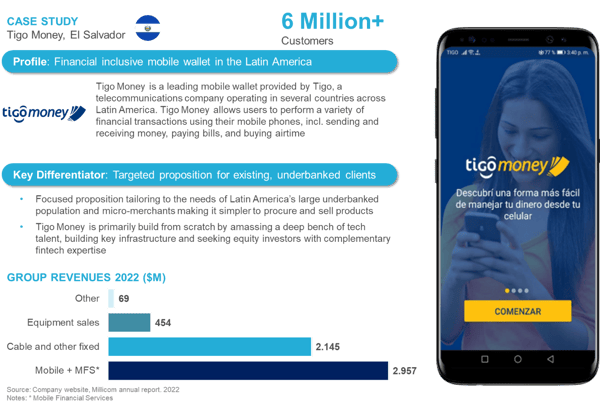Bulent Dal
23-08-23


Welcome to the fourth and final instalment of our blog series on Telcos in the financial space based on our extensive report co-produced with Fincog: “Unlocking Financial Services for Telcos.”
Previously we examined:

Tigo Money uses its existing infrastructure to reach a large underbanked and underserved population of Latin America, minimising customer acquisition cost.
Targeting more affluent segments or business banking customers who require advanced or customised financial products and services e.g., cross-border payments, lending, asset management can offer higher revenue. While serving these segments can incur significant acquisition and servicing costs to facilitate offline and online capabilities, catering to high-end customers may increase loyalty and revenue opportunities in the long term.
In both cases, Telcos need to evaluate the trade-offs between customer acquisition and profitability to identify the optimal target audience for their financial services. A well-informed target customer analysis can help create tailored, and scalable financial products and services that meet the unique needs of their ideal customer segments and lead to higher customer satisfaction, retention, and profitability.
While it is important to have the right strategic positioning and product portfolio in place, customer growth and retention require Telcos to provide a differentiated value proposition. This involves delivering a seamless, user-friendly experience across all customer journey touchpoints, from onboarding and account management to payments and support.
One of the challenges here is that customers have become accustomed to instant availability for all their needs, which is why Telcos need the expertise and technology that helps them win in a competitive space. Choosing the right partner for state-of-the-art services for instant card issuing, contactless NFC payments, and real-time data availability becomes more essential than ever.
The rewards for meeting this challenge come in the shape of data that mobile operators can use to interpret customer behaviour across various devices and journeys. Properly integrating offline CRM data with online cookies and mobile devices enables operators to identify customers across multiple devices and screens and monitor full customer journeys and enhance user interaction with their brand, including personalised advertisements and promotions.
For example, Yabx, a digital lending platform by Telco operator Comviva catering to underbanked segments, enabled credit scoring of 100 million customers globally across Africa, Asia and Latin America by utilising their service provider data.
Thus, prioritising customer experience built on data insights can empower Telcos to differentiate themselves from the competition and unlock new growth opportunities.
The convergence of telecommunications and financial services industries is poised to accelerate as trends like embedded and decentralised finance gain momentum, and an increasingly collaborative ecosystem takes shape.
With technical capabilities becoming easier to integrate and allowing third-party developers to access their platforms via Open APIs to build services on top of their mobile wallets, it has become easier than ever for mobile network operators to capitalise on these.
Done right, this will add new revenue streams, growth, and a competitive edge for years to come.
Facilitating payments via a simple mobile wallet and card offering is a good way to start. This will allow the Telco company to build deeper relationships with their customers and collect valuable data on their needs and behaviours.
In the second stage, Telcos can use customer data to expand their product portfolio and create tailored solutions, such as additional credit solutions based on informed underwriting decisions or even brokerage and asset management services.
The third stage involves embedding services in the daily lives of customers. People expect constant connectivity and accessibility. Financial services offerings such as payments, buy-now-pay-later (BNPL) or smartphone loans can encourage the adoption of other services within the ecosystem.
Thank you for reading! But the fun does not have to end here. Head over to our website to read more about how we can help your Telco succeed in the world of financial services.


